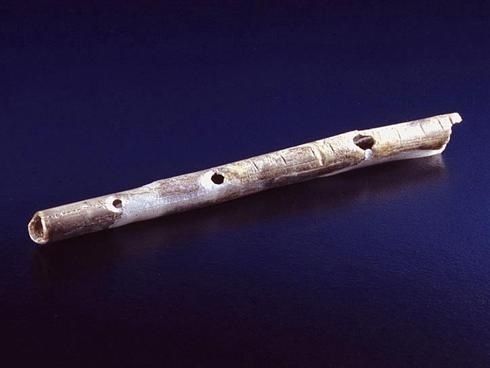Post by UKarchaeology on Aug 11, 2015 12:44:51 GMT

(2012) Good news, flute fans. You have prehistoric company -- flutes go back at least 42,000 years, longer ago than previously reported, conclude archaeologists looking at the likely era of the first modern human occupation of Europe.
In an upcoming report in the Journal of Human Evolution, led by carbon dating expert Thomas Higham of the United Kingdom's University of Oxford, experts reanalyzed Stone-Age artifacts from Geißenklösterle cave in southwestern Germany.
The "Aurignacian" artifacts found at the cave site have long been associated with modern humans, rather than our Neandertal cousins who populated Europe for hundreds of thousands of years before dying out around 30,000 years ago. Geißenklösterle cave lies in the "former Danube Valley through which the Ach River flows today," notes the study. And its artifacts have been central to debates about when early modern humans first moved into Europe.
That's too bad, because earlier radiocarbon dates of items from the cave seem to have been erroneous, the team reports, ones that made the era look more recent (by about 2,000 to 3,000 years) than it really was:
" These dates fueled an extensive debate on the chronology of the earliest European Aurignacian and the integrity of the archaeological sequence at the site, which remained unresolved for many years," says the study.
Reanalyzing the dates, the artifacts suggest that early modern humans migrated into Germany around 42,000 years ago, moving up the Danube Vally. Together with a 41,000 year-old tooth found in England, and similar artifacts found in Italy, the evidence suggests people had moved into Europe by around 45,000 years ago, moving into the region near the cave during a cold spell in Europe's climate that lasted a few thousand years (see Q & A below).
And those folks likely played music, as shown by a swan bone flute and and mammoth bone flute dating to 42,000 years ago among the artifacts (first found in the 1970's but erroneously dated to around 37,000 years ago). Concludes the study:
"...the region can be viewed as one of the key areas in which a variety of cultural innovations, including figurative art, mythical images, and musical instruments, are first documented. These dates are consistent with the Danube Valley serving as an important corridor for the movement of people and ideas."
(pics/source: content.usatoday.com/communities/sciencefair/post/2012/05/prehistoric-flutes-found-from-42000-year-old-cave/1#.VcntGPnqif6 )
